The world has gone SUV crazy, with the increased sales of 4x4s causing a surge of interest in driving off-road. Sure, there are plenty of road-biased, family friendly SUVs that stick to front-wheel drive, but for every other Skoda Karoq or Ford Puma, you’ll probably spot a Land Rover Defender or some sort of Range Rover.
Whether you’ve got something capable of a few green lanes or terrain altogether more serious, you can’t just aim your SUV at the mud and hope for the best. In this guide we’ll tell you how to prepare for and deal with a variety of sticky situations.
However, while modern electronics and some more old-fashioned hardware can do astounding things, don’t forget the suitability of your tyres. Your fancy Defender on 22-inch wheels and summer tyres will slip and slide on snow, while a Dacia Duster would have no trouble when fitted with winter rubber.
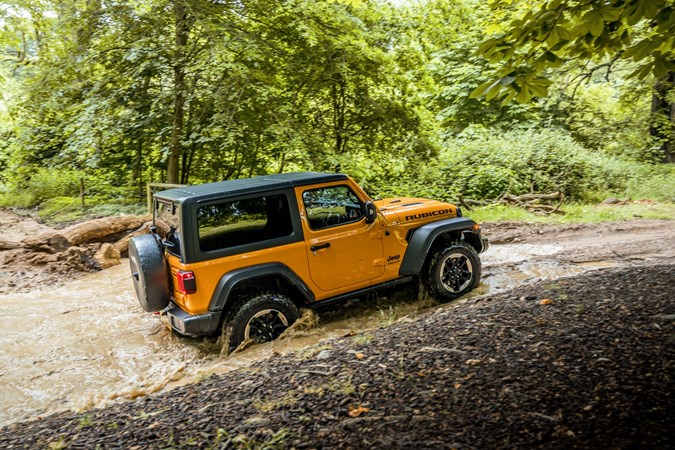
The 10 steps to off-road perfection
Well, we say perfection, but of course, nothing’s ever perfect. For one, no two surfaces are identical, and the worse they are, the less consistent they are likely to be to drive on. Bearing that in mind, these general pointers will stand you in good stead for the challenge of a green lane, snowy day, or a muddy carpark.
Step 1: know your SUV
Before taking your SUV off-road, always have a good look around it. Make sure the tyres are in good order and check their suitability for the conditions, and know your off-roader’s basic capabilities long before you set off. Check out your departure, ramp and approach angles first.
By that, we mean whether the nose is going to hit the ground first when approaching a hill; then whether there’s enough ground clearance, when cresting it; and whether the back is going to hit the ground before the back wheels have started to climb or when you level out on the other side.
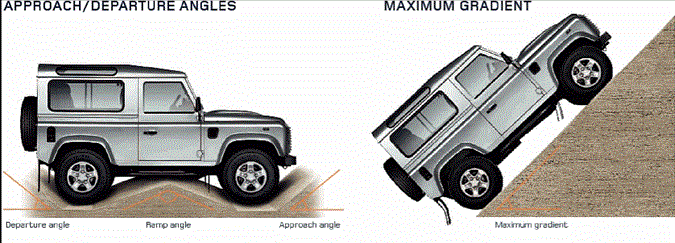
When going into water, as a rule of thumb, make sure that it’s no deeper than the top of your tyres. Get out of the car before going in, and measure the depth carefully with a long stick. If it’s a flooded road, and you’re still unsure, find a diversion rather than risk terminal damage to your engine.
Step 2: what to carry with you
Always have provisions – at the very least, some water and a mobile phone (never bank on there being signal, though). Make sure you have the right clothes and footwear, and always take spares in case of the worst.
Step 3: putting you and your car in the right mode
Always assess risks before setting off, by either using the driver display (if you’re lucky enough to have one), or by getting out and having a look. Select the mode most closely matched to the conditions and drive as slowly as possible without losing momentum.
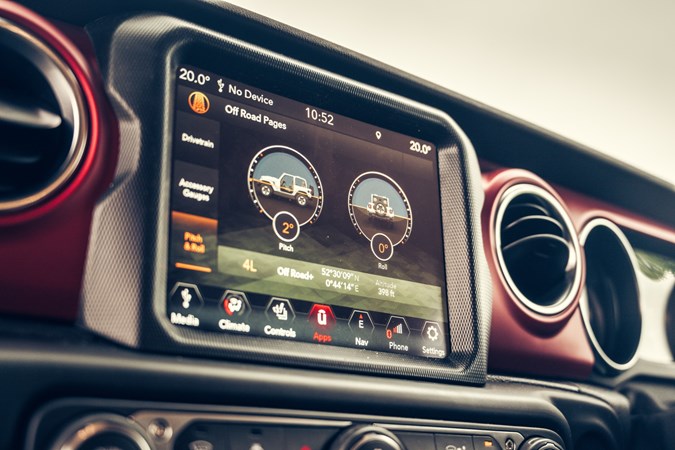
As a rule of thumb, always be gentle with the accelerator pedal. In many modern off-roaders, you’ll find the throttle response changes depending on your drive mode – so a sports mode is a lot sharper than a snow mode, which has a much longer travel for precise slow progress.
On more hardcore 4x4s like Land Rovers and Jeep Wranglers, you can also set the screen to show various bits of off-road data. This includes the angle of your SUV, what the drivetrain is doing and in some cases steering angle. This might seem like a basic piece of information, but when in deep, it’s easy for a hard-working driver to lose track of where the front wheels are pointing.
We’d also recommend getting familiar with your car’s camera system where fitted. Surround view cameras can help in tight spots, while dedicated off-road systems such as those found in Land Rovers allow you to place the front wheels precisely and even see ‘through’ the bonnet. This makes cresting a steep hill a far less daunting experience.
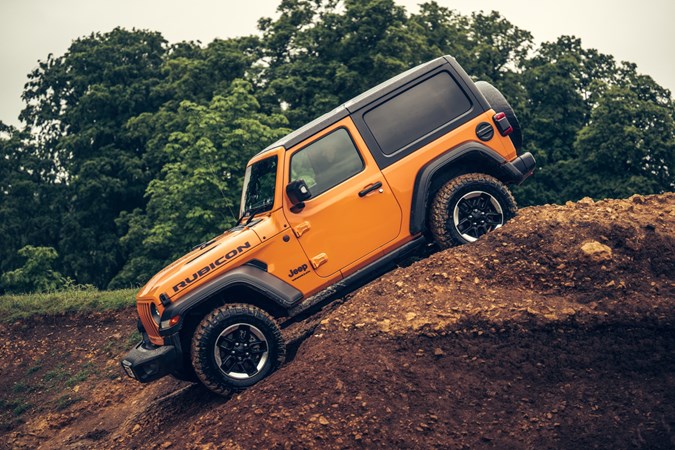
Step 4: know all the rules
Be aware of the Country Code, and if you’re going green laning or anywhere that’s off the beaten track, make sure that you never damage the environment and drive within the limits of the defined tracks.
Always give way to wildlife, and also drive slowly and quietly when near horses and pedestrians. Unless you have explicit permission, don’t drive on fields or private land, and even then be aware of your own limits as well as those of your car. You can get hurt off-roading – if you’re in any doubt about proceeding, then don’t do it.
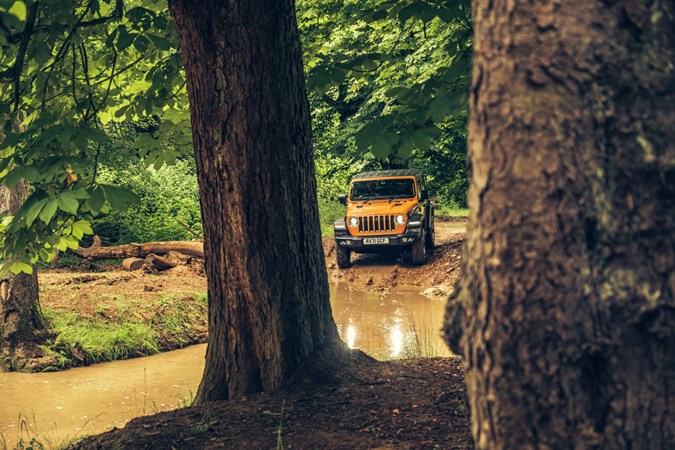
Step 5: use the right gears
On many off roaders you’ll get multiple drive modes, so you should always be able to match your car’s drivetrain program to the conditions. If you’ve got something more road biased, look for an off-road or AWD lock mode. If in doubt, check your car’s manual before setting off.
When going uphill always use the highest gear possible, and when going down, make it the lowest one. Many 4x4s, including recent pickups, have a Hill Descent Control (HDC) system (or something like it), which allows the car to use its brakes and transmission to allow you to descend a slope at a safe speed of your choice. Use it.
If you’re driving an auto, try and take manual control of the gears when the going gets tough, and always remember that progress is a combination of being able to manage momentum, traction and speed. Be careful, be decisive and always plan ahead.
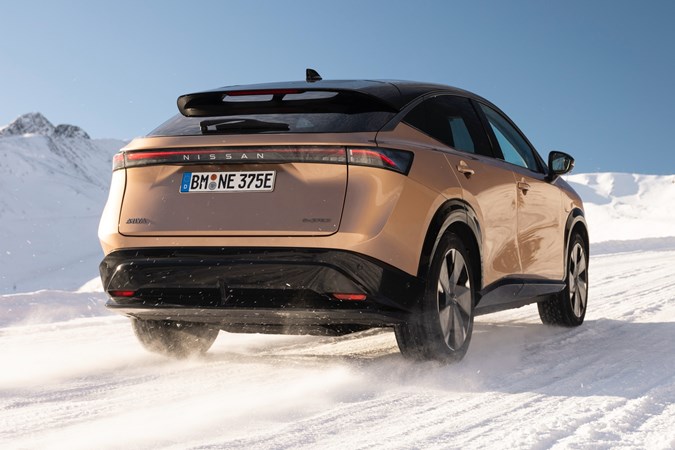
Step 6: snow, gravel and grass
We’ve already produced a good guide to general driving in snow, and you’ll learn much of what you need to know there. But in a nutshell, if you use the highest gear possible and maintain momentum, you’ll keep going. Stopping is more of an issue, although winter tyres make the world of difference. These provide far more grip than summer or even all-season tyres in snow, although you want studded tyres for ice. Either way, keep plenty of distance between you and the car in front.
Modern four-wheel drive systems work in conjunction with the SUV’s traction and stability control systems to apportion power to whichever wheel or wheels has the most grip. Although we wouldn’t recommend just stamping on the throttle everywhere, these systems do often need to register some slip before they can work, so don’t be afraid of a little wheelspin.
Gravel is more challenging because the amount of available traction is always changing. Consider it a low-grip surface like snow, but accelerate more gently, and take an even wider arc when cornering. Keeping the speed down will also reduce the risk of generating a dust cloud.
Grass is low grip, too, especially when it’s wet. One good tip is to never follow the vehicle above to avoid creating tracks, and – again – try and take the widest possible arc when changing direction.
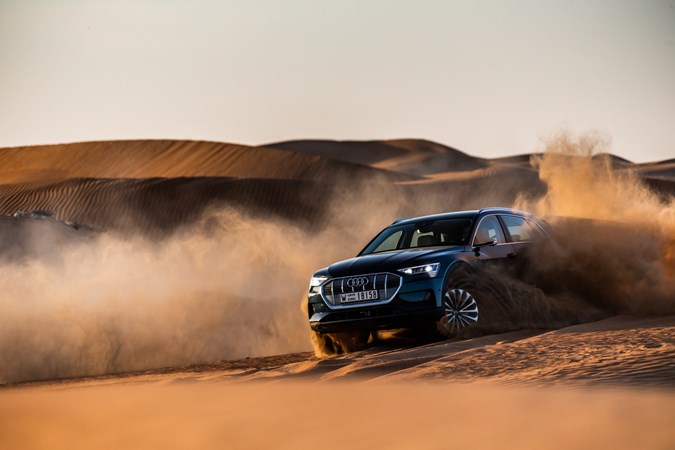
Step 7: sand driving
Driving in sand is all about maintaining momentum, and being sensitive with the controls. Always look a long way ahead, and where available, select the sand setting for the best results. Consider lowering your tyre pressures to 15psi (and put them back when you get back on the road), and if you park up, leave it on a downhill slope.
Step 8: rock crawling
Before undertaking such work, do get out and assess the risks – and if you have a passenger, get them to walk ahead of you. If you don’t you could risk alloy wheel marks, a puncture or more serious damage to the underside of the car or bodywork.
To mitigate lean, make sure when you’ve loaded the car that the luggage is evenly distributed and nice and low. Keep it in a low gear, and try to take a direction that attacks any incline directly.
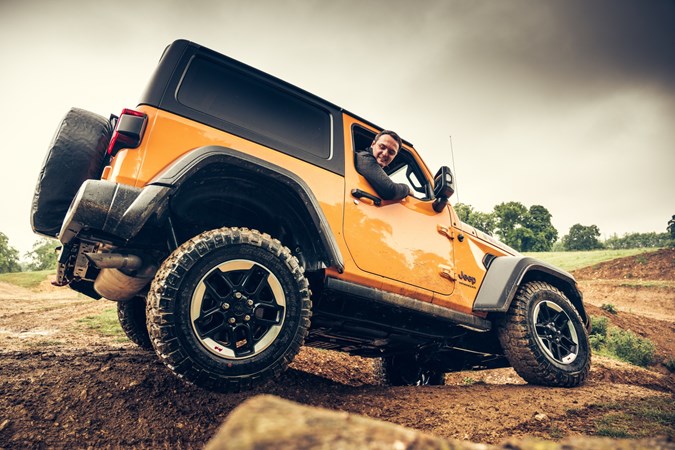
If you have a more purposeful off-road vehicle, you may have the ability to disconnect the anti-roll bars to let the wheels on opposite sides reach the ground on very uneven surfaces, or selectable centre, front or rear differential locks that will keep the car moving forward even if one or two wheels are off the ground.
Step 9: mud and ruts
Another challenging driving condition that demands precision and smoothness. Always remember to stay within the existing tracks and keep your wheels straight as much as you can for as often as you can.
Try to make sure that you keep the car’s lowest point clear of the ground, a discipline that will have you reading the track ahead very carefully indeed. Once again, drive as slowly as you can, but also try to maintain momentum.
If you’re on an uphill incline, a touch of speed when approaching can overcome loose surfaces, and don’t be afraid of using more power to keep going, but try to avoid braking traction at all times. If you can’t see what’s ahead before committing – get out and look at the surface for rocks, large holes or tree stumps so you can proceed in confidence.
Step 10: water
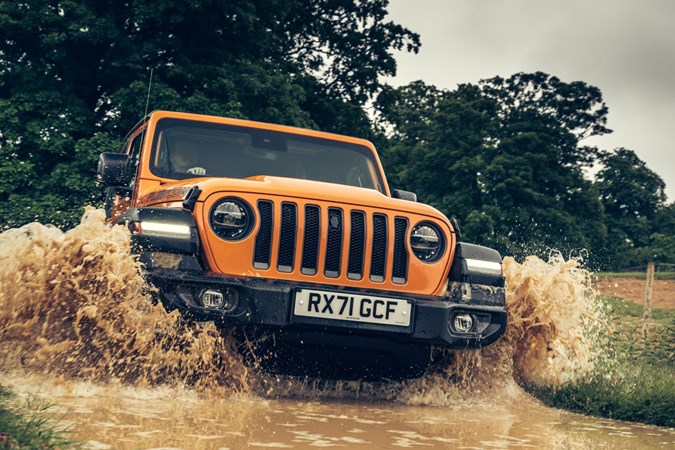
The easiest way to look at this is to try and avoid driving in water at all times. If you must, you really should work out how deep it is before going in – use a stick or watch another vehicle go through before taking the plunge.
If you’re behind another vehicle, wait until they’ve left the water, as the unsettled waves they make could add danger to your crossing. Once you’ve ascertained it’s safe, enter the water slowly, avoid making a bow wave, and if you have them, select the car’s wading sensors.
…and remember, once you’ve finished off-roading before you head for the road, check all of your tyres and their pressures. Stop and look for wheel, body and bumper damage, clear any mud out from the wheelarches, and take your time getting back up to speed.












